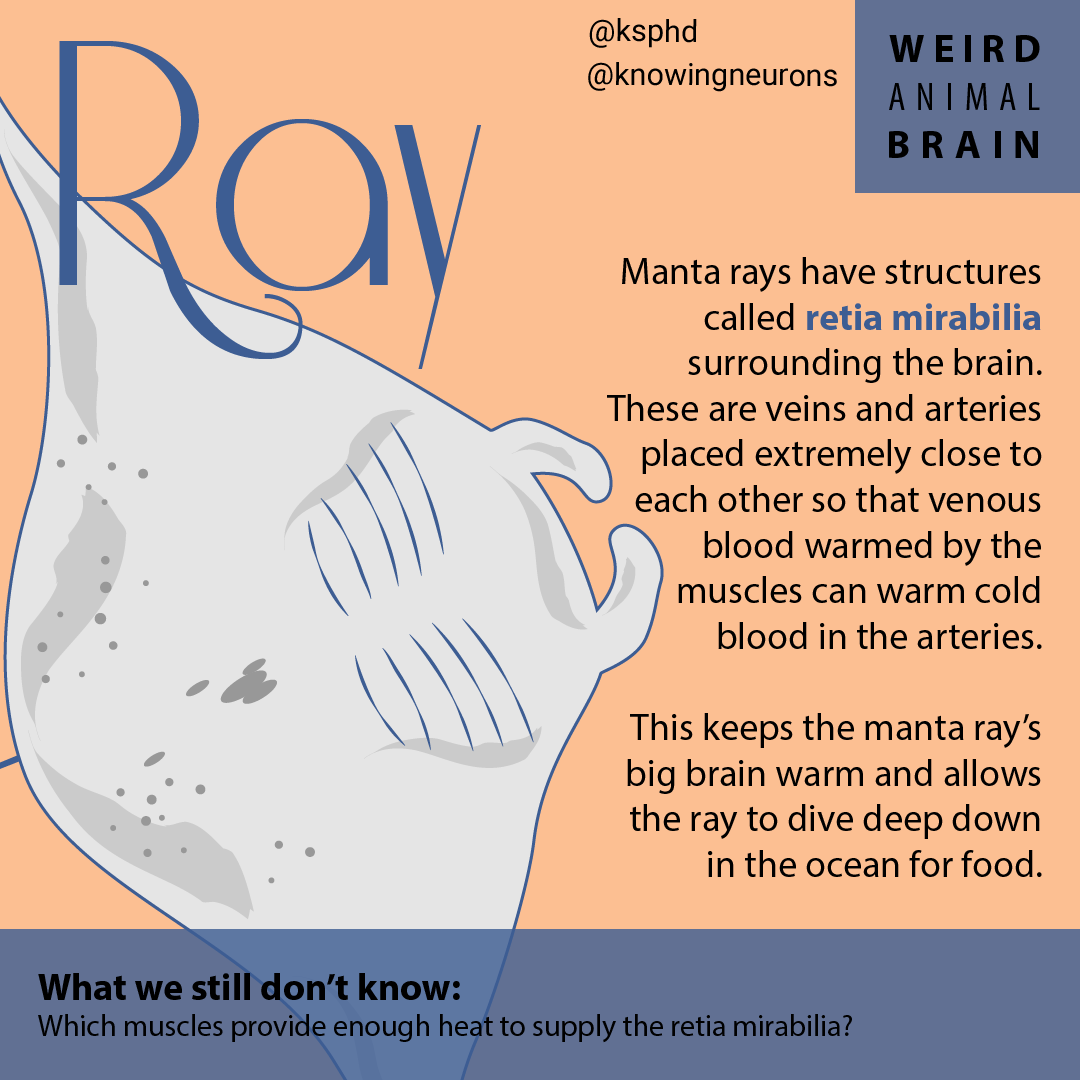Last month, on the big island of Hawaii, I swam with giant, beautiful aliens. Or at least that’s what it felt like. I went night snorkeling with manta rays and had the privilege of seeing 10 or 11 graceful behemoths. Some had a wingspan of over 10 feet long. Before our group got in the water, to prepare us for what we were about to see, our guide reassured us that manta rays are like sharks, but only the good parts, none of the scary parts. They don’t have teeth, they only eat plankton, and they have no stinger like their sting ray counterparts.
In addition to these unique characteristics, they also have a special mechanism to allow for a big brain to function deep in the ocean. Manta rays have the largest brain-to-body ratio of all the elasmobranchii (sharks, rays, and skates).
For more info:
Zoological Journal of the Linnean Society: Evidence of brain-warming in mobulid rays
Nature Communications: Extreme diving behaviour in devil rays links surface waters and the deep ocean
The Open Anatomy Journal: Encephalization and Brain Organization of Mobulid Rays
Todos Santos Eco Adventures' Blog: Manta Rays - The Ocean’s Kings of Charisma
TED Ed: Why are sharks so awesome?


